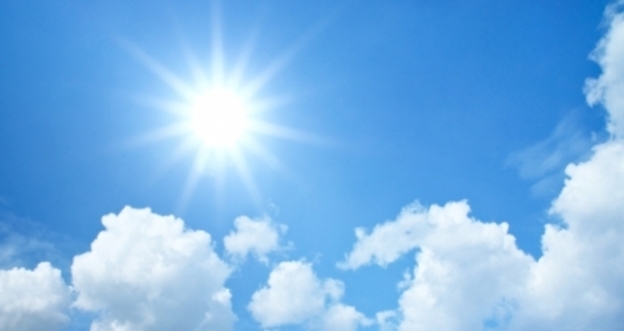Catechism Of The Catholic Church – The Stages Of Revelation

PART ONE: THE PROFESSION OF FAITH
SECTION ONE “I BELIEVE” – “WE BELIEVE”
CHAPTER TWO – GOD COMES TO MEET MAN
Article 1
THE REVELATION OF GOD
ii. The Stages of Revelation
In the beginning God makes himself known
54 “God, who creates and conserves all things by his Word, provides men with constant evidence of himself in created realities. and furthermore, wishing to open up the way to heavenly salvation – he manifested himself to our first parents from the very beginning.”6 He invited them to intimate communion with himself and clothed them with resplendent grace and justice.
55 This revelation was not broken off by our first parents’ sin. “After the fall, (God) buoyed them up with the hope of salvation, by promising redemption; and he has never ceased to show his solicitude for the human race. For he wishes to give eternal life to all those who seek salvation by patience in well-doing.”7
Even when he disobeyed you and lost your friendship you did not abandon him to the power of death. . . Again and again you offered a covenant to man.8
The covenant with Noah
56 After the unity of the human race was shattered by sin God at once sought to save humanity part by part. the covenant with Noah after the flood gives expression to the principle of the divine economy toward the “nations”, in other words, towards men grouped “in their lands, each with (its) own language, by their families, in their nations”.9
57 This state of division into many nations, each entrusted by divine providence to the guardianship of angels, is at once cosmic, social and religious. It is intended to limit the pride of fallen humanity10 united only in its perverse ambition to forge its own unity as at Babel.11 But, because of sin, both polytheism and the idolatry of the nation and of its rulers constantly threaten this provisional economy with the perversion of paganism.12
58 The covenant with Noah remains in force during the times of the Gentiles, until the universal proclamation of the Gospel.13 The Bible venerates several great figures among the Gentiles: Abel the just, the king-priest Melchisedek – a figure of Christ – and the upright “Noah, Daniel, and Job”.14 Scripture thus expresses the heights of sanctity that can be reached by those who live according to the covenant of Noah, waiting for Christ to “gather into one the children of God who are scattered abroad”.15
God chooses Abraham
59 In order to gather together scattered humanity God calls Abram from his country, his kindred and his father’s house,16 and makes him Abraham, that is, “the father of a multitude of nations”. “In you all the nations of the earth shall be blessed.”17
60 The people descended from Abraham would be the trustee of the promise made to the patriarchs, the chosen people, called to prepare for that day when God would gather all his children into the unity of the Church.18 They would be the root on to which the Gentiles would be grafted, once they came to believe.19
61 The patriarchs, prophets and certain other Old Testament figures have been and always will be honoured as saints in all the Church’s liturgical traditions.
God forms his people Israel
62 After the patriarchs, God formed Israel as his people by freeing them from slavery in Egypt. He established with them the covenant of Mount Sinai and, through Moses, gave them his law so that they would recognize him and serve him as the one living and true God, the provident Father and just judge, and so that they would look for the promised Saviour.20
63 Israel is the priestly people of God, “called by the name of the LORD”, and “the first to hear the word of God”,21 The people of “elder brethren” in the faith of Abraham.
64 Through the prophets, God forms his people in the hope of salvation, in the expectation of a new and everlasting Covenant intended for all, to be written on their hearts.22 The prophets proclaim a radical redemption of the People of God, purification from all their infidelities, a salvation which will include all the nations.23 Above all, the poor and humble of the Lord will bear this hope. Such holy women as Sarah, Rebecca, Rachel, Miriam, Deborah, Hannah, Judith and Esther kept alive the hope of Israel’s salvation. the purest figure among them is Mary.24
6 DV 3; cf. ⇒ Jn 1:3; ⇒ Rom 1:19-20
7 DV 3; cf. ⇒ Gen 3:15; ⇒ Rom 2:6-7.
8 Roman Missal, Eucharistic Prayer IV, 118.
9 ⇒ Gen 10:5; cf. ⇒ 9:9-10, ⇒ 16; ⇒ 10:20-31.
10 Cf. ⇒ Acts 17:26-27; ⇒ Dt 4:19; Dt (LXX) 32:8.
11 Cf. ⇒ Wis 10:5;⇒ Gen 11:4-6
12 Cf. ⇒ Rom 1:18-25.
13 Cf. ⇒ Gen 9:16; ⇒ Lk 21:24; DV 3.
14 Cf. ⇒ Gen 14:18; ⇒ Heb 7:3; ⇒ Ezek 14:14.
15 ⇒ Jn 11:52
16 ⇒ Gen 12:1
17 ⇒ Gen 17:5; 12:3 (LXX); cf. ⇒ Gal 3:8
18 Cf. ⇒ Rom 11:28; ⇒ Jn 11:52; ⇒ 10:16.
20 Cf. DV 3.
21 Dt 28: 10; Roman Missal, Good i Friday, General Intercession VI;
see also ⇒ Ex 19:6
22 Cf. ⇒ Is 2:2-4; ⇒ Jer 31:31-34; ⇒ Heb 10:16
23 Cf. ⇒ Ezek 36; ⇒ Is 49:5-6; ⇒ 53:11
![]()



